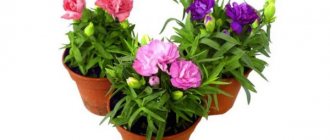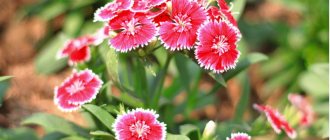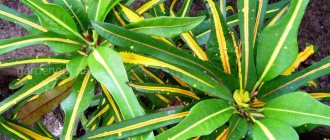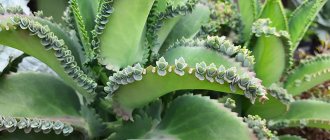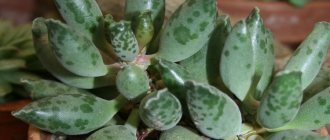Turkish cloves are very popular among gardeners. The love for it is explained by its unpretentiousness, duration of flowering and very bright color. Plants are exclusively decorative. To obtain such beauty, cultivation and care must be competent.
Bearded carnation, or Turkish Barbarini Mixture F1
Bearded carnation, or Turkish carnation (Dianthus barbatus) is a perennial plant from the clove family, but is cultivated in gardens as a biennial plant. In the first year, it forms a lush rosette of medium-sized elongated leaves. In the second year, each plant produces straight stems up to 60 cm high. At the top of the stem, numerous small flowers up to 2 cm in diameter are formed, collected in corymbose inflorescences.
Currently, many forms and varieties of cloves are known. Low, dwarf varieties 15–20 cm high are grown for spring decoration of flower beds, for balconies and windows, and tall ones are grown for cutting.
Flowers of various colors, simple and double, with a faint aroma. This carnation is valued for its bright, pure colors (white, pink, red, velvety black, etc.) and early flowering. It blooms in June, when summer flowers are not yet blooming and fills the gap in cutting material. Turkish cloves have a very delicate aroma.
Carnation bearded, or Turkish Sooty
What does Turkish clove look like?
Turkish carnation is a perennial herbaceous plant, grown in gardening as a biennial. It has straight, knotty shoots from 20 to 75 cm high, covered with oppositely sessile lanceolate-shaped leaves. They have a green or bluish color with a red tint. During flowering, fragrant flowers with a diameter of 1.5-3 cm, simple five-petaled, or having varying degrees of terry, appear on the bushes. The colors of these carnations are quite varied and include shades of white, cream, pink and red, and the velvety petals usually have a jagged edge. The flowers are collected in corymic inflorescences up to 12 cm in diameter. Turkish carnation forms them only in the second year of cultivation, towards the end of June. During the first year, the plant forms only a leaf rosette. It is noteworthy that the flowers of such carnations are edible. After flowering, boxes with black seeds appear on the bushes. They ripen by August and can be used to propagate carnations. Seed germination lasts about 3-5 years.
Turkish carnation attracts gardeners not only with its beautiful flowers, but also with its undemanding nature in terms of growing conditions and easy care compared to its relatives. It can tolerate semi-shaded places and also withstands frosty winters well.
“Undeservedly forgotten” – Turkish carnation (bearded)
Bearded carnation - a bright summer flower for a colorful flower bed
At the beginning of summer, when spring flowers have already withered and summer flowers are just setting buds, the bearded carnation blooms.
Its flowers, although small, are collected in lush inflorescences and are painted in bright colors. Against the backdrop of a still green flower bed, the bushes look gorgeous, and they also spread a delicate sweet aroma around. What is this crop and is it difficult to grow? The scientific name of the flower is Dianthus barbatus, but it is better known as Turkish carnation. She was nicknamed Bearded for her long bracts.
Brief rules for growing Turkish cloves
The table provides brief rules for growing Turkish cloves in open ground.
| Landing | Sowing of seedlings is carried out closer to the beginning of April, the seedlings are transferred to the ground from mid-May. From the end of spring, you can sow cloves directly into the garden bed; in mid-autumn, winter sowing can be done. |
| Lighting level | These plants require full sun. |
| Watering mode | The flowers are watered twice a week, spending up to 15 liters of water per 1 square meter. m. In hot weather and drought, watering is carried out more often. |
| The soil | Turkish cloves prefer fertile loams or sandy loam soils. |
| Feeding | Carnations are fertilized 3 times during the summer: when the height of the seedlings reaches 10 cm, with the appearance of buds and during the flowering period. Both organic and mineral compositions are suitable. |
| Bloom | Flowering occurs in mid-summer. |
| Trimming | When the carnation fades, you can cut off its flower stalks. |
| Reproduction | Seeds (seedlings or direct sowing), less often - cuttings or layering. |
| Pests | Mole crickets and earwigs sucking insects. |
| Diseases | Fungal or viral diseases. |
When to plant
Perennial bearded carnation is used in gardens as biennial plants. It disappears in the third year after planting. The bush grows up to 20 centimeters, if we are talking about low-growing varieties, tall ones are about 85 cm in length. The flower consists of five petals. The inflorescences are collected in small bouquets (up to 30 on one bush) up to 12 centimeters in size. The color range of carnations is fascinating in its diversity. The buds are presented in one, two or three shades.
Interesting! In England, cloves are called “Sweet William” and are used in cooking.
There are about 250 varieties, they differ in size, color, and shape of petals. There are terry and simple carnations, they come in one-color and two-tone.
The most famous types are:
- “Indian carpet” is a frequently grown variety; the height of the bush is about 20 centimeters. Blooms from early May to late June. It will decorate areas and flower beds with large, lush inflorescences for two years.
- "Georgette" is distinguished by its double, velvety and fragrant inflorescences. The flower comes in a variety of colors and blooms from June to July.
- "Super duplex" grows up to 50 centimeters. The petals are red in color with a white border on the edge.
- "Nigricans" is famous for its burgundy inflorescences.
- “Black” fascinates with dark wine bouquets.
Once the variety for planting has been selected, it is necessary to decide on the time for growing the cloves. Planting seeds in open soil occurs in May. Many gardeners are interested in when to plant seedlings. Regardless of the type of flower and the height of the bush, seedlings are sown in a container in early spring.
Growing Turkish cloves from seeds
Sowing time for seedlings
If Turkish cloves are grown through seedlings, you can start sowing in the first half of spring. To do this, you will need nutritious but fairly light soil, for example, a mixture of sand or vermiculite with leaf humus. The substrate is disinfected and then poured into clean pots or containers. A drainage layer should be laid at the bottom of the planting container.
The clove seeds are buried by about 1 cm, maintaining a distance of 2-3 cm between them. The crops are covered with translucent white paper on top. Before emergence, the containers are kept in a moderately warm (about 16-18 degrees) room and the soil is kept constantly moist. Shoots should appear within 2 weeks.
Seedling care
When the sprouts appear, they are transferred to the brightest place, slightly lowering the temperature so that the seedlings do not stretch out. Turkish carnation is light-loving, so additional lighting can be used for it. With the appearance of the second pair of true leaves, the seedlings are planted in ordinary or peat pots with a substrate of the same composition as when sowing. After picking, the seedlings will only need systematic watering and careful loosening. To make the bush more lush, at the stage of 5-7 pairs of leaves, you can pinch the cloves.
The seedlings can be moved outside towards the end of May, when the frosts will probably subside. Only a few varieties of Turkish carnation bloom in the year of sowing, so the planting period does not affect the flowering period - the main thing is to have time to plant the plant in a permanent place before August. Before planting, it is recommended to harden the seedlings by moving them into the air every day and gradually increasing the time they spend outside the house. Usually, seedlings begin to be hardened a couple of weeks before transplanting.
Diversity
Kor!An (Andrey Korzun) / Personal archive
Varieties of Turkish cloves - for every taste. Here you can find low-growing “dwarfs” up to 20 cm in height, and tall varieties that grow up to almost 80 cm.
Flowering times are also different . Some bloom in the spring, in May, and can then bloom again in the fall. Others delight with color in the summer.
Kor!An (Andrey Korzun) / Personal archive
Sowing Turkish cloves in open ground
When to sow
Turkish cloves can be sown directly in the garden. In this case, sowing begins only after stable warm weather has established itself - at the very end of spring or beginning of summer. You can sow cloves before winter - in October. For winter sowing, only dry seeds are used, and the soil must also be dry. A bed with cloves is mulched for the winter with a layer of sawdust or peat, removing the cover only next spring.
How to plant correctly
Turkish carnation. Sowing. Care. Flowering.
Although the Turkish carnation is considered shade-tolerant, it will require ample sun to bloom profusely. To plant carnations, choose a well-lit place with nutritious sandy or loamy soil. A couple of weeks before planting, you need to dig it up with a shovel, at the same time adding the necessary nutrients: compost or humus (about 7 kg per 1 sq. m) and wood ash (about 250 g per 1 sq. m). You can also use mineral supplements - about 1 tbsp. spoon of nitrophoska and 1 teaspoon of universal flower fertilizers per 1 sq. m beds. The dug up bed is left under the film until planting. By the time of sowing, it is removed and furrows up to 1.5 cm deep are made on the soil surface. 15 cm are left between rows. The finished furrows are watered, and then the seeds are placed in them, maintaining a distance of about 3 cm. The crops are covered with a thin layer of soil and lightly compacted , and before sprouts form, cover with non-woven material.
When planting Turkish carnation seedlings in a flowerbed, the bushes should not be buried too deep into the ground - their root collars are left on the surface. Between bushes they maintain about 15-25 cm, depending on the size of the variety.
Description of appearance
Turkish carnation (Dianthus barbatus) is a herbaceous bushy plant with many stems, some of which spread along the ground, while others, bearing flowers, rise vertically upward, curving close to the ground. Flowering shoots are knotty, hard, reaching a height of 50–60 cm. The leaves are narrow, lanceolate, with pronounced longitudinal veins. The color of the leaves and stems can be dark green with a burgundy or bluish tint, light green or a thick green tone.
The inflorescences appear at the ends of strong stems in the form of corymbs consisting of many small five-petaled flowers with a faint clove scent. The petals of varietal and hybrid plants are fringed, with a jagged edge; varieties with double flowers are especially valued. The fruits ripen in oblong capsules, the seeds are round, brown, shiny. The flowering of Turkish carnations occurs in May - July, depending on the variety, and lasts a month - one and a half.
Caring for Turkish Carnation
Watering
In order for the Turkish carnation to delight with abundant flowering, it will need a sufficient amount of moisture. The bushes should be watered approximately twice a week, using up to 1.5 buckets of water per 1 square meter. m beds. In dry and hot weather, watering is carried out more often. It is advisable to direct the water not to the leaves, but to the roots of the plants, so they will definitely not get sunburn.
When watering cloves, it is important to remember in moderation. This flower tolerates dry periods well and will withstand a lack of moisture better than waterlogging. Bushes planted in shade or low areas will not need water as much, and overwatering can cause root rot in such plants. If the bush begins to shed its leaves, it should be treated with a fungicide solution (for example, XOM in a proportion of 40 g per 10 liters of water). By autumn, watering the carnation is reduced, moistening the soil only during drought.
Feeding
In addition to watering, Turkish cloves will need to be fed. The first time flowers are fertilized at the seedling stage, when the height of the seedlings is about 10-12 cm. To do this, you can use a solution of nitrophoska (1 tablespoon) and Agricola Forward or another similar product (1 teaspoon) per 10 liters of water. The second feeding is carried out at the beginning of budding; for this, 1 tbsp is dissolved in 10 liters of water. a spoonful of potassium sulfate and superphosphate. During the flowering period, you can use any fertilizer for flowering species. In autumn, you can fertilize plants only with potassium and phosphorus.



